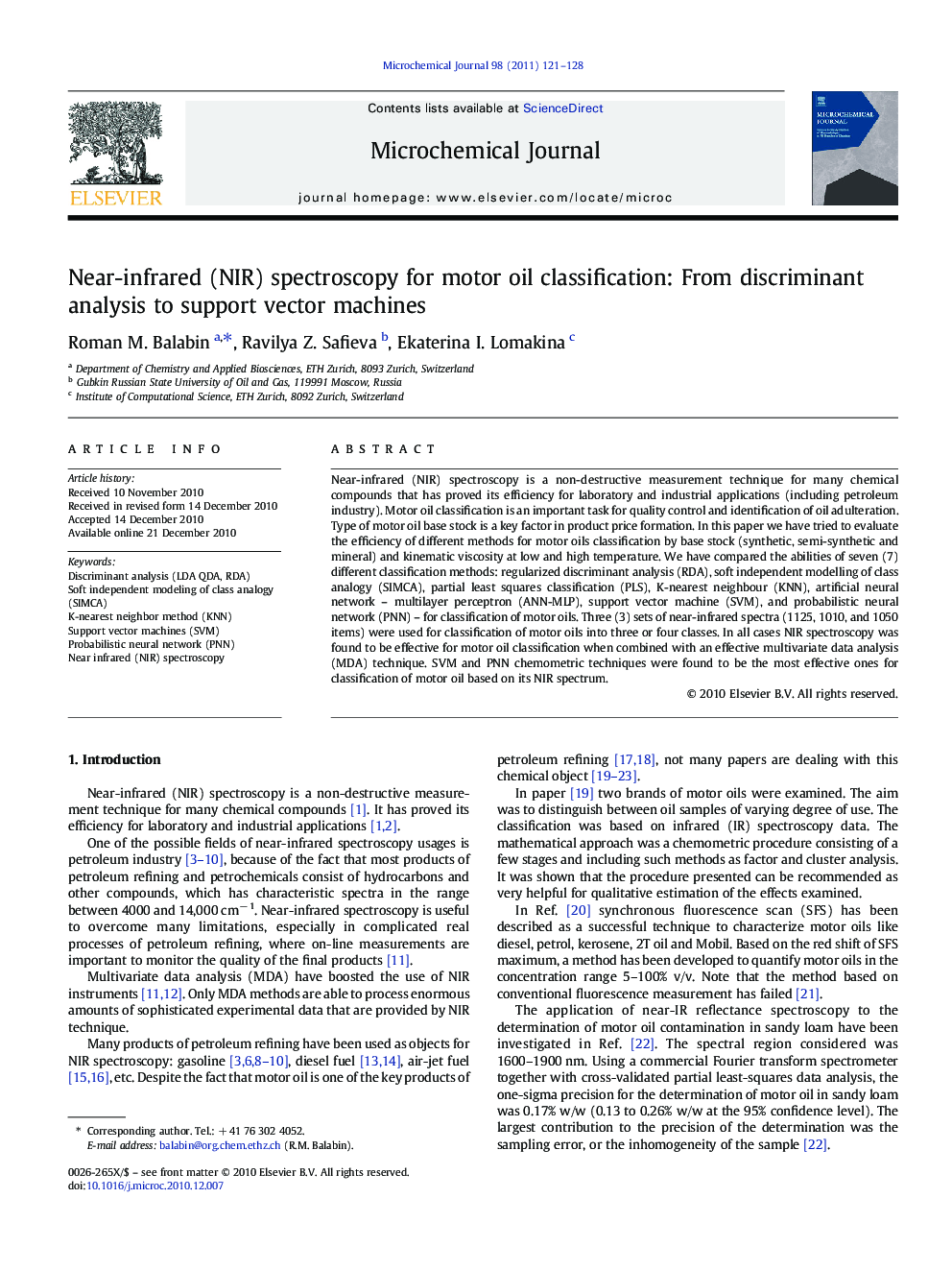| Article ID | Journal | Published Year | Pages | File Type |
|---|---|---|---|---|
| 10556932 | Microchemical Journal | 2011 | 8 Pages |
Abstract
Near-infrared (NIR) spectroscopy is a non-destructive measurement technique for many chemical compounds that has proved its efficiency for laboratory and industrial applications (including petroleum industry). Motor oil classification is an important task for quality control and identification of oil adulteration. Type of motor oil base stock is a key factor in product price formation. In this paper we have tried to evaluate the efficiency of different methods for motor oils classification by base stock (synthetic, semi-synthetic and mineral) and kinematic viscosity at low and high temperature. We have compared the abilities of seven (7) different classification methods: regularized discriminant analysis (RDA), soft independent modelling of class analogy (SIMCA), partial least squares classification (PLS), K-nearest neighbour (KNN), artificial neural network - multilayer perceptron (ANN-MLP), support vector machine (SVM), and probabilistic neural network (PNN) - for classification of motor oils. Three (3) sets of near-infrared spectra (1125, 1010, and 1050 items) were used for classification of motor oils into three or four classes. In all cases NIR spectroscopy was found to be effective for motor oil classification when combined with an effective multivariate data analysis (MDA) technique. SVM and PNN chemometric techniques were found to be the most effective ones for classification of motor oil based on its NIR spectrum.
Keywords
Related Topics
Physical Sciences and Engineering
Chemistry
Analytical Chemistry
Authors
Roman M. Balabin, Ravilya Z. Safieva, Ekaterina I. Lomakina,
